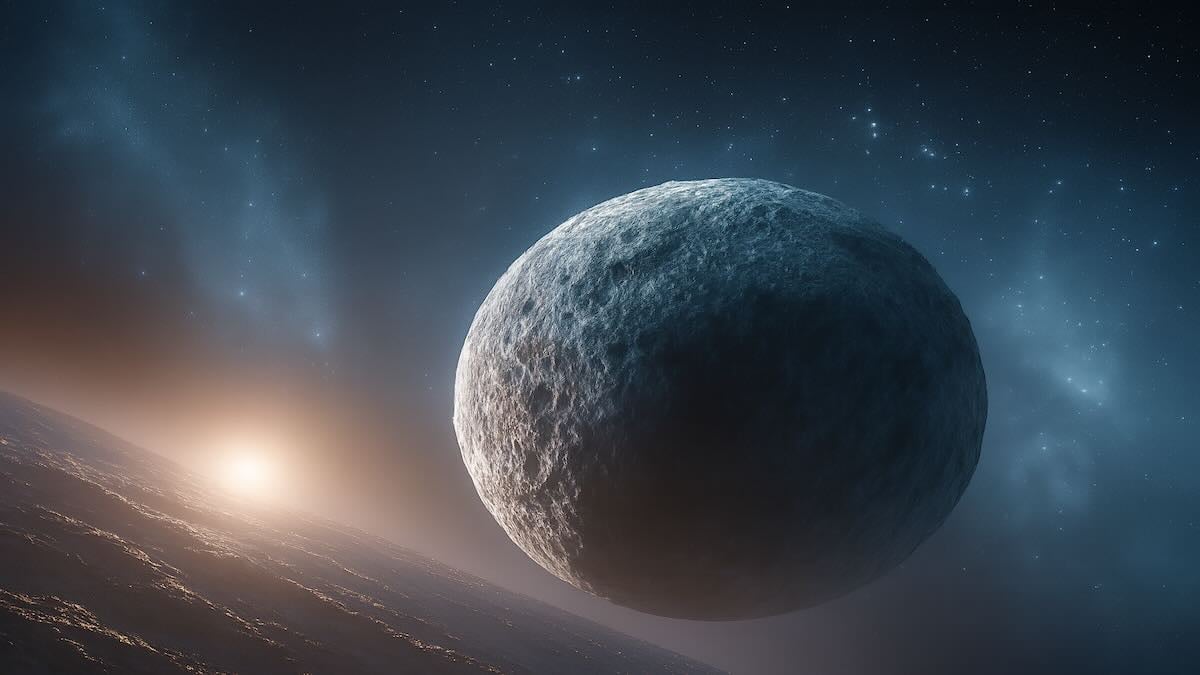Something astronomers just spotted could upend the map we trust. Quiet shifts add up, and one disturbance can redirect worlds. Our solar system feels stable, yet rare events can bend rules we thought fixed. Researchers now point to a trigger that, in specific conditions, reshapes orbits and futures. The stakes seem distant, yet the questions reach our place, our sky, and our timeline.
Why this rare disturbance challenges the solar system we trust
Astronomers report a cosmic encounter that tests long-term stability. The scene sits far from the Sun, where giant planets and distant debris respond to subtle pulls. A nearby star, passing at range, can tug on orbits. The effect remains small, yet over time it can grow. That risk turns abstract math into concrete paths that shift, tilt, or stretch.
Two planetary scientists, Nathan Kaib and Sean Raymond, explored the scenario with N-body simulations. They ran thousands of model runs, then watched patterns form. Gravity from a passing star sometimes nudged paths just enough to cascade. Most trials stayed calm, but a few tipped into new states. In one set, a planet wandered; in another, paths crossed.
Their results kept probabilities low but not zero, which matters because timescales are vast. In rare branches of the models, Earth faced extreme outcomes. It could collide with another planet, or drift away. The team notes the solar system usually absorbs small tugs. Yet, on long horizons, even small chances deserve a clear look.
How stellar flybys tilt orbits and stir long-term dynamics
A stellar flyby acts like a slow, off-center push. The passing star adds a brief, extra pull; then the force fades. Because everything keeps moving, that push lands differently on each world. Outer giants feel it more than inner rocky planets, as distance lowers the Sun’s hold. The first changes often appear as slight shifts in eccentricity and tilt.
Those slight shifts can spread. A giant planet that changes pace can hand off momentum to others. So, a tug at the edge can ripple inward through resonances and close passes. The system still seeks balance, but the new balance may not match the old one. That is why modelers track many runs, then sort outcomes by frequency and scale.
In the simulations, extreme endings remained rare. Yet some branches led to path crossings, while others led to wide drifts. A few even ended with ejection, where a planet escapes the Sun’s grip. Because the models include uncertainty, researchers stress ranges and context. They use many trials, compare assumptions, then refine inputs and outputs step by step.
Risks for Earth and neighbors, balanced by low probabilities
What could this mean for Earth? The team emphasizes that major harm looks unlikely. Yet risk depends on size, path, and timing. A small change, added over ages, can matter. Conditions also include the passing star’s mass and distance. Because those details vary, results spread out. That is why the headline sounds bold, while the odds stay small.
Astronomers care because they track how small effects add up. As giants trade tugs, inner orbits can shift, though usually by little. Still, forecasts must admit tails. Models say a collision could happen in rare paths. So could ejection in extreme cases. The solar system usually dampens chaos, yet never perfectly. That is the sober message behind the buzz.
Best practice is simple: keep watching, and keep modeling. New surveys map nearby stars and their motions, which sharpens inputs. Better ephemerides improve outputs, because errors compound slowly. With cleaner data, ranges narrow. Scientists then compare independent codes, so hidden bugs stand out. Progress feels steady, not flashy, which suits the scale of the problem.
Modeling a five-billion-year horizon for the solar system
The timeline stretches far. Researchers place the largest changes about five billion years from now. Before then, most effects arrive as tiny drifts. Because change accumulates, slow steps still count. According to the study, risk peaks when rare alignments match a passing star’s pull. Even then, most simulated systems hold together, though with adjusted paths.
Patience defines the work. Teams run large batches, then study the spread. They mark which inputs push results toward danger, then test those edges again. Since chaos lurks in multi-body motion, confidence grows from statistics, not one run. So, “small chance” gains weight only after many trials agree. That framing keeps claims firm, yet careful.
Numbers matter, and so do caveats. N-body models track gravity well, yet cannot fix every initial detail. Unknowns in star catalogs and tiny orbit errors both feed uncertainty. As data sets expand, the same codes can rerun with better starts. Then forecasts update. The process looks slow, but that is the point: long horizons reward rigor.
Probes, watches, and why continued observation still matters
While models run, probes keep sending context. The Voyager spacecraft now travel in interstellar space, beyond the Sun’s magnetic shield. Their instruments sample fields and particles, then send clues about the outer environment. That stream helps teams judge how space beyond the planets behaves, which sharpens assumptions near the edge of the solar system.
Back at home, sky surveys map stellar neighbors. Catalogs track motion, distance, and mass, so future flybys can be forecast. Data pipelines also improve orbital solutions for planets and minor bodies. Because tiny errors can grow, every refinement helps. As inputs improve, models need fewer guesses, and output ranges tighten in step.
Change happens all the time, but understanding the situation helps prevent panic. Most changes are small and happen gradually. Extreme changes are rare but possible. Scientists carefully study these rare possibilities to balance excitement with careful planning. This approach turns scary ideas into useful research directions.
What this distant risk still tells us about ourselves
The new picture widens our sense of time, and it keeps curiosity alive. We learn that stability is earned, not given, and that patient checks matter as much as big news. As models and probes refine the story, the solar system becomes both familiar and new.
